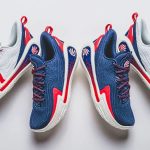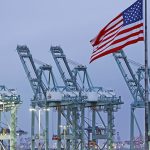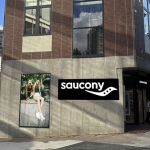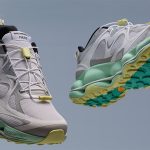Billabong International Ltd. delivered a modest increase in operating earnings before charges in its fiscal year ended June 30, boosted by a strong second half and fueled by the Americas region.
CEO Neil Fiske said at the company’s general meeting the company said it expected to produce a strong second half to help drive overall EBITDA growth for the year, despite a first half that was behind the prior period.
“We had three core objectives for H2: continue the turnaround in our largest market of the Americas, expand comparable gross margins across all of our regions – a key indicator of brand health – and reduce the Cost of Doing Business (CODB). We hit all three of those targets,” said Fiske. “The key to our ongoing success is the relevance of our brands. We continue to strengthen the connection with our customers, with global social media followership up 42 percent year-on-year to almost 37 million.”
Figures are in Australian dollars.
Total sales in the year slumped 8.8 percent to $974.7 million and were down 6.7 percent on a currency-neutral basis. Sales were down 4.7 percent on a currency-neutral basis, excluding the sold Tigerlily and Sector 9 businesses. Comparable retail revenue (comparable bricks & mortar stores + e-commerce) were up 0.1 percent, and e-commerce sales overall grew 22 percent on a currency-neutral basis, excluding Tigerlily and Sector 9.
Group EBITDA of $51.1 million was up 2.8 percent on a currency-neutral basis and 0.3 percent as reported. In the second half, EBITDA of $27.2 million was up 50.1 percent on a currency-neutral basis and 41.1 percent as reported.
EBITDA was less than a million dollars below the guidance range provided in November and affirmed again in February, allowing for the sale of Tigerlily. If not for the widely reported weak retail conditions in Australia, EBITDA would have been “well up in the range,” said Billabong.
Inventory was down 7.5 percent on a currency-neutral basis (excluding Tigerlily) at the year’s end and gross margins improved 90 basis points in the year.
A non-cash impairment charge of $106.5 million led to net loss $77.1 million. In the year-ago period, Billabong lost $23.7 million.
In the Americas, revenues for the year declined 10.1 percent in the year to $432.9 million and were down 7.5 percent on a currency-neutral basis. EBITDA jumped 46.9 percent prior to global allocations. Gross margin expanded 290 basis points for the year and ran up 380 basis points in the second half.
Total comparable retail sales in the Americas region was up 8 percent (excluding Sector 9); brick and mortar stores increased 2.3 percent. Operating costs were down 4.9 percent as reported and off 7.6 percent adjusted for the sale of Sector 9.
E-commerce represented 7.4 percent of sales in the region and is growing rapidly. Inventory in the region was down 14 percent.
On a conference call with analysts, Fiske said that the face of challenging market conditions in North America, the top line was planned conservatively and intense focus was placed on controlling inventories, streamlining the organization, reducing cost, improving its own retail, growing e-commerce and expanding gross margins through its sourcing and concept-to-customer projects.
“Market share gains achieved in the core specialty channel by Billabong and RVCA, overall, and in both the men’s and women’s divisions, are a reflection of brand quality and resonance with consumers,” said Fiske. “This ongoing brand strength is also an important factor in gross margin expansion in the region.”
He added, “A surge of momentum for brand Billabong in the Americas was particularly noteworthy this year and gives us a lot of enthusiasm going forward.”
Total sales in the Americas were down 3.1 percent in the second half, excluding Sector 9, primarily due to six fewer stores, lower sales to closeout channels and lower sales of RVCA to one of its large accounts that recently emerged from bankruptcy. However, gross margins expanded 380 basis points in the second half, bringing year-over-year improvement to 290 basis points.
He called the retail channel the “big success story” for the Americas region, boosting its confidence in its direct-to-consumer approach and offering transferable lessons to other geographies. Comp store sales were up 2.3 percent in the second half and retail gross margins up 380 basis points.
“The retail team has done a great job simplifying the merchandising, driving up our own brand presentation and improving in-store execution. We put more emphasis on dual gender balance and growing the women’s business,” said Fiske. “Women’s apparel comps were up 12.5 percent while men’s grew 3.5 percnet. E-commerce was up 25.2 percent, with a 60 basis point improvement in gross margins. Comparable retail sales, including both e-commerce and brick-and-mortar, were up a very strong 8 percent. In the wholesale channel, revenues were down 4.6 percent for the year excluding Sector 9 and 3.5 percent for the half. However, gross margin dollars in the wholesale channel were up 2.9 percent in the second half, reflecting higher quality revenue and fewer closeout channel sales. Again, it’s hard to overstate the significance of this turnaround in the Americas and the value of the work done by our teams there.”
In the Asia Pacific region, sales were down 7.1 percent to $367 and gave back 8 percent on a currency-neutral basis. The sales were impacted by two distinct factors: macro retail conditions in Australia, and some correctable brand execution issues.
Retail comparable store sales were down 5 percent and retail gross margins were behind fiscal 2016 by 210 basis points due to higher promotions and clearance markdowns.
Asia Pacific EBITDA before global allocations dropped $9.2 million, or 28.3 percent.
With regard to brand performance, the company noted some fashion misses and execution issues, notably with brand Billabong. For example, in women’s swimwear the region recorded a strong result in fiscal 2016. The same assortment formula that worked in the prior year was repeated for the start of fiscal 2017, just as the market was shifting to new trends.
Billabong said the U.S. assortment was on or ahead of those trends, but Australia lagged. The U.S. range was quickly tested in a set of Billabong stores in Australia and produced a stronger outcome. The new assortment has now been rolled out to all stores.
Fiske said, “Early reads on the new seasonal assortment were encouraging.”
In Europe, revenues in the year were down 9.3 percent $174.8 million and down 1.6 percent on a currency-neutral basis. Sales were up 2.8 percent on a currency-neutral basis in the second half.
The region delivered its fourth consecutive year of EBITDA growth, up 8.9 percent for the year before global allocations, on the back of a strong second half.
On a comparable basis, gross margins were up 60 basis points in the second half and 40 basis points for the full year.
Billabong said the UK market overall struggled after the Brexit decision, and was a drag on comparable store sales which were down 2.5 percent in the year. However, excluding the UK, retail comps in Europe were up 0.4 percent for the year. E-commerce in Europe grew 27.5 percent and now accounts for 4 percent of total sales.
Wholesale revenue was up in Europe in the second half by 4.6 percent, with the year down 2.4 percent overall. Europe’s sustained year-on-year improvements reflect a disciplined approach to strategy, improved quality of revenue, concentration on the big three brands, and leveraging of global platforms.
““These results reflect the tangible progress we are making in implementing our turnaround strategy in all regions, particularly in the Americas and Europe,” said Fiske. “The outcome validates our approach and provides a way ahead to address the performance in the Asia Pacific region, where there have been challenges in the broader retail market over the past year, particularly in Australia.”
Looking to the 2018 financial year, the composition of the earnings will continue to be weighted towards Asia Pacific and retail in the first half, and towards the Americas and Europe in the second half. Further progress in the Americas and Europe is expected although circumstances that have impacted the Asia Pacific performance in fiscal 2017 are expected to continue to weigh on trading in that region, especially in the first half.
Overall, fiscal 2018 EBITDA (excluding significant items) is projected to exceed fiscal 2017 EBITDA of $51.1 million, subject to reasonable trading conditions and currency markets remaining relatively stable. Given the increasing proportion of earnings represented by the Americas and Europe, the earnings profile for fiscal 2018 is expected to be similar to fiscal 2017, with the first half EBITDA below the prior corresponding period and all the growth biased towards the second half.
Photo courtesy Billabong
















